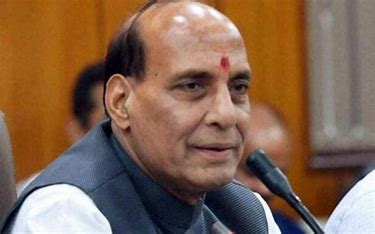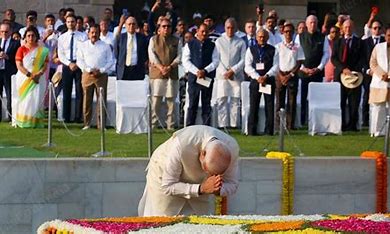
India has a longstanding tradition of extracting silver as a by-product from base metals mining. According to the Indian Bureau of Mines, the total primary silver production in the country for the fiscal year 2019-20 was around 76 tonnes.
The state of Rajasthan emerged as the largest contributor, accounting for 43 tonnes, sourced from its abundant zinc-lead deposits situated in the Bhilwara and Udaipur mineral belts. Other significant silver-producing states included Andhra Pradesh (with a 12-15% share), Telangana, and Haryana.
Despite a consistent annual increase in domestic consumption at a rate of 6-7%, the overall silver output in India has remained relatively static, ranging between 75-80 tonnes over the past decade. A notable aspect is that more than 90% of India’s silver is extracted as a by-product during the mining of base metals such as lead, zinc, and copper, where silver is naturally associated with their ore bodies.
While India meets a substantial portion of its silver demand through imports, accounting for over 30-40%, the country contributes only a modest 2-3% to the global mine silver production. This positions India as a marginal player in the global silver mining landscape despite its significant potential.
To enhance self-sufficiency, the government has initiated measures to stimulate mineral exploration through the National Mineral Exploration Trust. Additionally, infrastructure development projects are underway to enhance the capacities of key silver-producing mines. If successful, these initiatives have the potential to optimize India’s silver resources, gradually reducing import dependence and improving its standing among the leading global silver mining nations.
Leading Silver-producing states in India
Rajasthan undeniably holds the top position as the leading silver producer, contributing to over 56.6% of the national output, with a production volume of 43 tonnes. Following closely, Andhra Pradesh plays a substantial role, accounting for 12-15% of the country’s total production, with a silver output ranging from 9.2 to 11.5 tonnes.
Telangana and Haryana also emerge as notable contributors, each producing 5-6 tonnes and 4-5 tonnes, respectively, constituting 6-7.5% and 5-6.5% of India’s total silver production.
The primary source of silver in these leading states is through by-products extracted during base metals mining operations. Silver is predominantly obtained as a secondary output while mining for base metals like lead, zinc, and copper in these regions. This by-product extraction plays a significant role in the overall silver production landscape in these states.
Jharkhand follows suit with a production range of 3-4 tonnes, contributing 4-5% to the national output. Karnataka and Madhya Pradesh each produce 2-3 tonnes, making up 2.5-4% of the total production. Lastly, Gujarat contributes 1-2 tonnes, representing 1-2.5% of India’s overall silver production. This distribution underscores the varied regional contributions to India’s silver output, with Rajasthan playing a pivotal role in shaping the national landscape.
RAJASTHAN – THE largest producer of Silver
Rajasthan is considered the largest producer of silver in India, contributing over 60% to the country’s total silver production. Rajasthan has dominated India’s silver production landscape for decades. The northwestern state accounts for over 55-60% of the country’s total silver output owing to its sizable reserves distributed across prolific silver mineral belts.
Rajasthan hosts several major silver mines that collectively contribute over 30% of national production. Chief amongst these is the Khetri Copper Complex located in Jhunjhunu district, one of the largest integrated base metals mining facilities in Asia.
It has been producing copper, zinc, lead and significant amounts of silver by-products for over a century from its rich polymetallic deposits. Another dominance-defining mine is Zawar Mines situated in Udaipur, one of Asia’s oldest underground zinc-lead mines that also yields silver.
Other important silver-producing assets include the open-cast Rampura Agucha mine in Bhilwara and the underground Harnai mines in Pratapgarh. The state government has played an active role in developing Rajasthan’s mining expertise and infrastructure over generations as well as continued support through incentives that ensure sustained output.
This enduring legacy of extensive high-quality deposits and substantial dedicated mining infrastructure underpins Rajasthan’s unchallenged position as the largest producer of silver among all Indian states.
Rajasthan’s dominance in silver production can be attributed to several key factors:
Abundant Silver Reserves: Rajasthan boasts numerous active and dormant silver mines concentrated in Bhilwara, Nagaur, and Khetri belts. These areas contain rich seams of lead and zinc deposits that host significant silver reserves.
Mining Heritage: Silver mining has played a vital role in Rajasthan’s economy for centuries. The state has cultivated a robust mining heritage, establishing strong infrastructure and accumulating expertise in the field over the years.
Government Support: The Rajasthan government actively supports and promotes silver mining. It formulates policies, grants mining leases, and facilitates the exploration of new reserves, contributing to the sustained growth of the silver mining industry in the state.
Some of the major silver mines in Rajasthan that contribute significantly to India’s total silver output include the Khetri Copper Complex in Jhunjhunu, the Zawar mines in Udaipur, and the Harnai mines in the Pratapgarh district. Collectively, these mines contribute over 30% to the country’s overall silver production.
In conclusion, India’s silver production, primarily derived as a by-product from base metals mining, has a rich historical context and is marked by a consistent annual output. Rajasthan holds a preeminent position, contributing over 56.6% to the national production, driven by its abundant zinc-lead deposits.
Despite a steady annual increase in domestic consumption, the overall silver output in India has remained relatively stable, showcasing the importance of by-product extraction in the base metals mining operations. Over 90% of India’s silver is obtained in this manner, particularly during the extraction of lead, zinc, and copper.
India’s global standing in silver production is modest, contributing only 2-3% to the global mine silver production and relying on imports to meet a substantial portion of domestic demand. However, the government’s initiatives to stimulate mineral exploration and enhance infrastructure in key silver-producing mines reflect a commitment to optimizing India’s silver resources and reducing import dependence.















